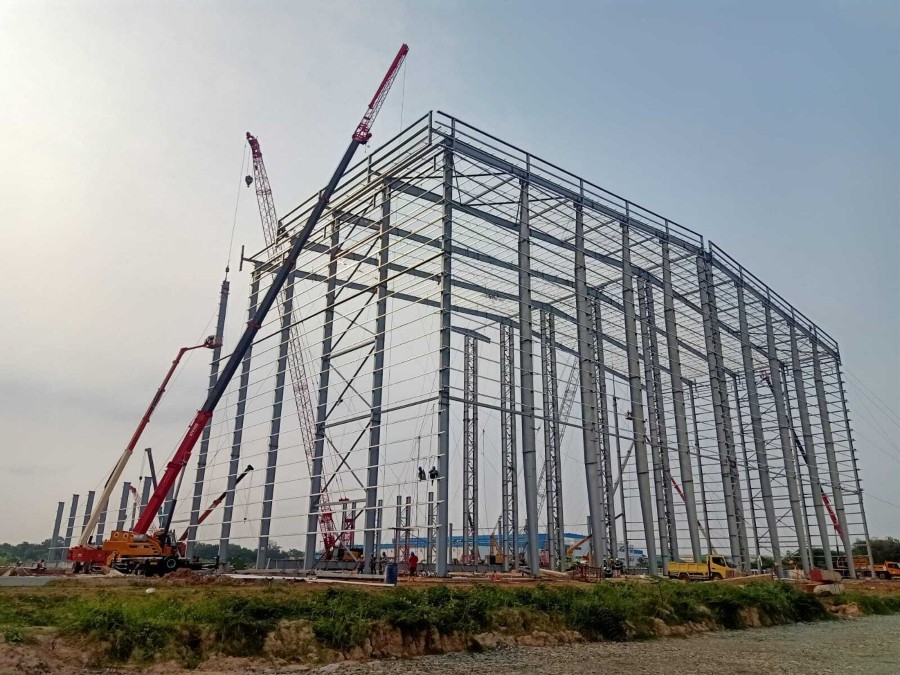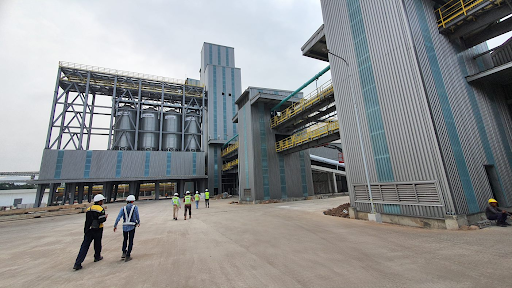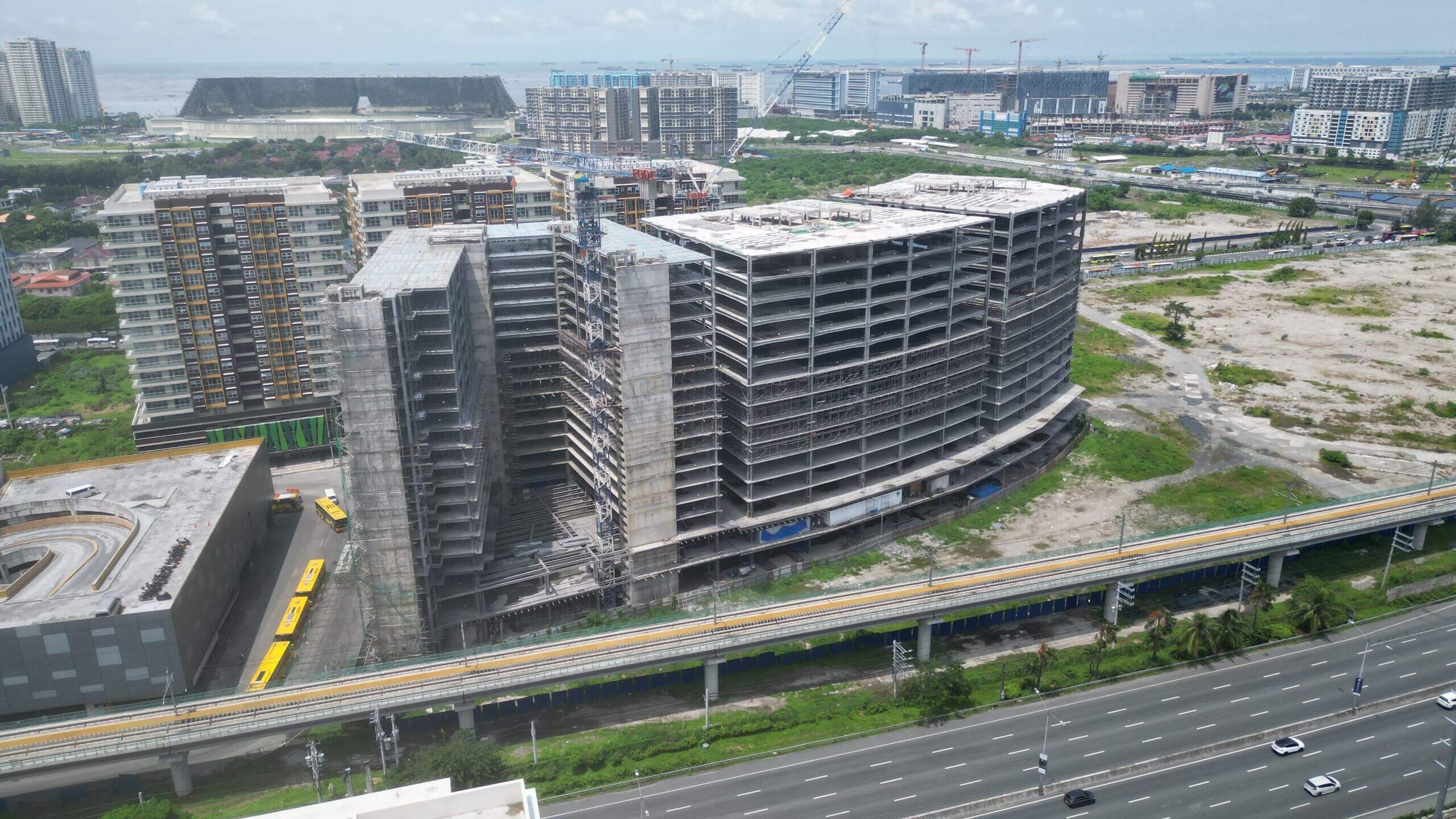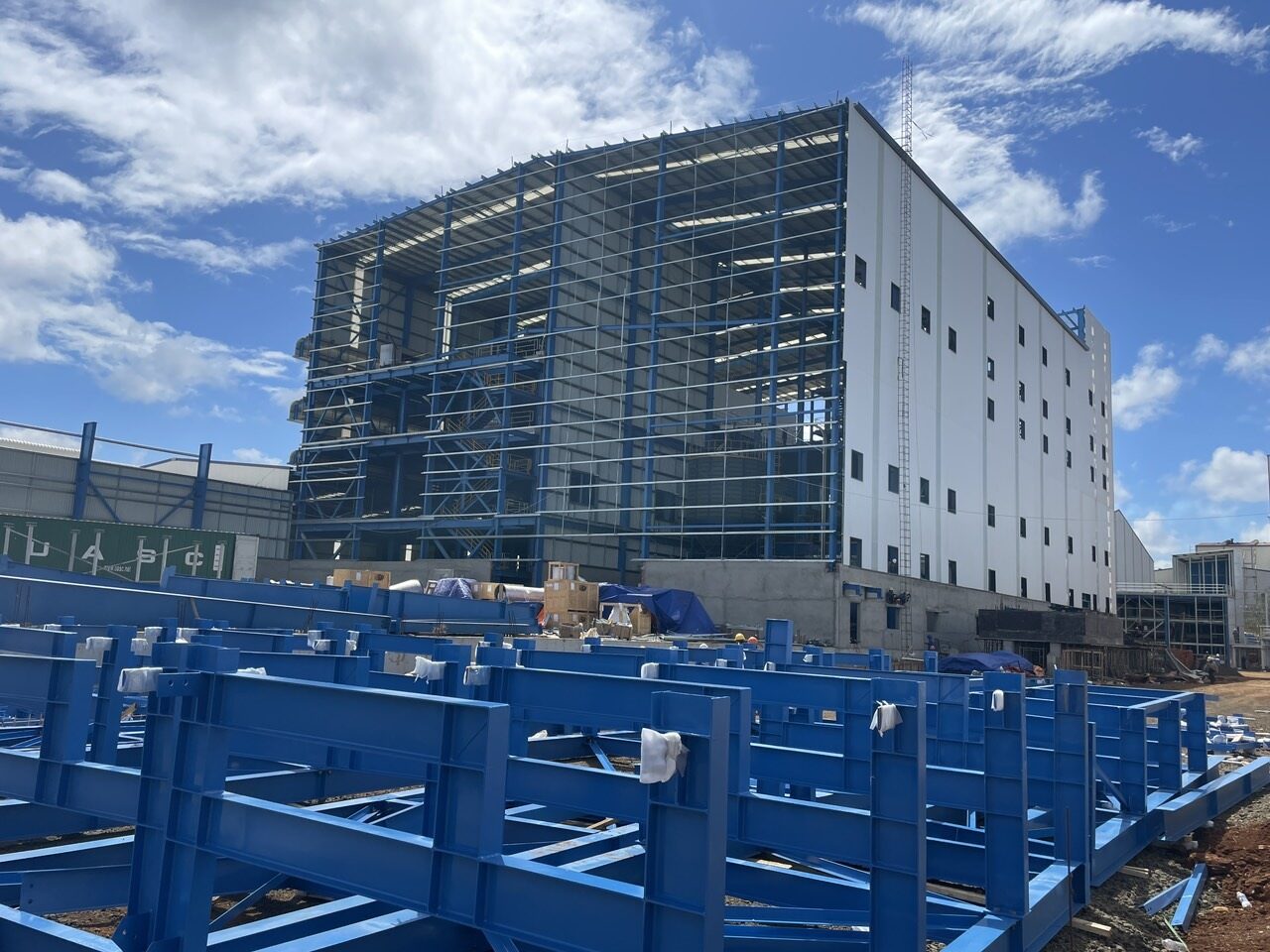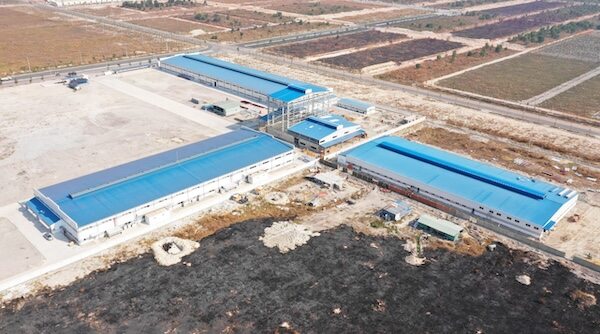In construction projects, the floor plays an extremely important role as it is the component responsible for transmitting and mainly bearing loads. The double-layer steel floor is widely trusted by many investors due to numerous outstanding advantages, enhancing the overall quality of the construction. Let’s explore the information about the double-layer steel floor structure with Pebsteel in the following article.
See more: Structural Steel: Types, Properties, And Applications
1. What is a double-layer steel floor structure?
The double-layer steel floor structure is designed to bear direct loads, combined with columns and beams to provide support for the steel floor. The beams play the role of bearing loads and transmitting them to columns, while columns are responsible for receiving the loads and transferring them down to the foundation of the structure.
This system is designed to withstand direct load and optimize the interaction between beams and columns, creating a robust and safe structure for the construction project. The double-layer design efficiently distributes the load and provides flexibility in constructing various types of buildings.
See more: What is a Steel structure? Main type of steel structure building
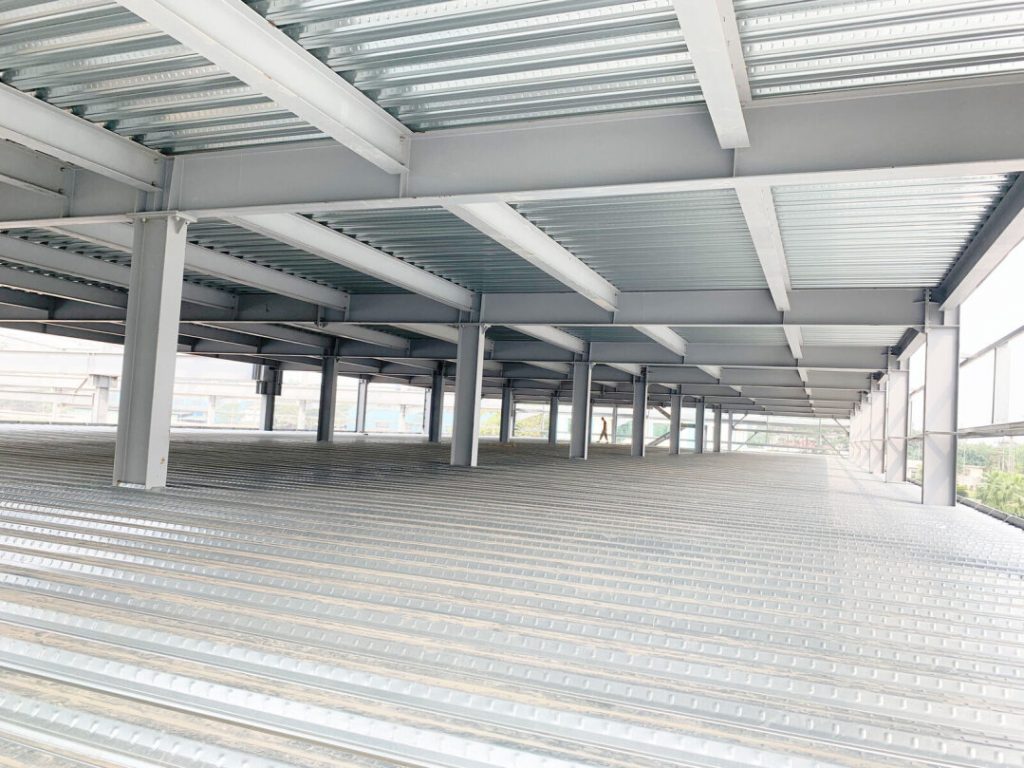
2. The structure of the double-layer steel floor
The double-layer steel floor consists of the top steel layer bearing negative moments and the bottom steel layer bearing positive moments.
2.1. Top steel layer
The top steel layer includes the floor cap steel supporting negative moments, cut at 1/4 of the short side length. It has a square structure positioned beneath the cap steel. However, this arrangement is often suitable for small-scale projects. Additionally, the steel-cutting process is not only complex but also creates obstacles during construction.
See more: What Is Bracing in Steel Structures?
2.2. Bottom steel layer
The bottom steel layer is the load-bearing layer, designed to withstand negative moments. Pressure-resistant steel will be arranged along the short side, and distribution steel will be placed perpendicular to the pressure-resistant steel along the long side. After tightly binding the steel in the bottom layer, construction workers proceed to add a spacer and apply the concrete coating to the floor. The double-layer steel floor will be separated using spacer legs to ensure the required working height of the floor.
See more: Advantages of Steel Structure
3. Layout of double-layer steel floor structure
The arrangement of a double-layer steel floor structure can be completed in two ways:
- 1-way steel floor arrangement: This method focuses on the floor bending in a specific direction or, it may bend in two directions in some special cases, but the bending in one direction will be much smaller than the other. In this layout, the investor may consider supporting walls or monolithic pouring along with the beams. Moreover, the connection with the beams is usually smaller than or equal to two adjacent edges.
- 2-way steel floor arrangement: In this method, the floor will bend in both directions with nearly equal bending. This is also known as a two-way spanning steel arrangement, where the connection with the beams is usually greater than or equal to two adjacent edges.
Here are detailed steps for arranging a double-layer steel floor structure:
- Step 1: Firstly, the steel arrangement process begins by placing the steel bars at the bottom, especially along the short edge. Then, the steel for the lower layer is arranged along the length of the structure. The length of the stirrup is measured from the edge of the beam and hooked down to other steel bars. Marking on the main beam steel bars with paint or chalk before placing the steel mesh will make it easy to determine the positions.
- Step 2: The subsequent stage is placing the knee steel bars (negative moments steel) from the edge of the beam, ensuring the prescribed dimensions.
- Step 3: After completing the knee steel arrangement, the next step is to use structural steel to fix the frame.
- Step 4: To create a protective layer for the concrete floor, supporting blocks will be used, which can be either granite or aggregate stones.
See more: What Is Structural Steel Welding? Definition And Methods
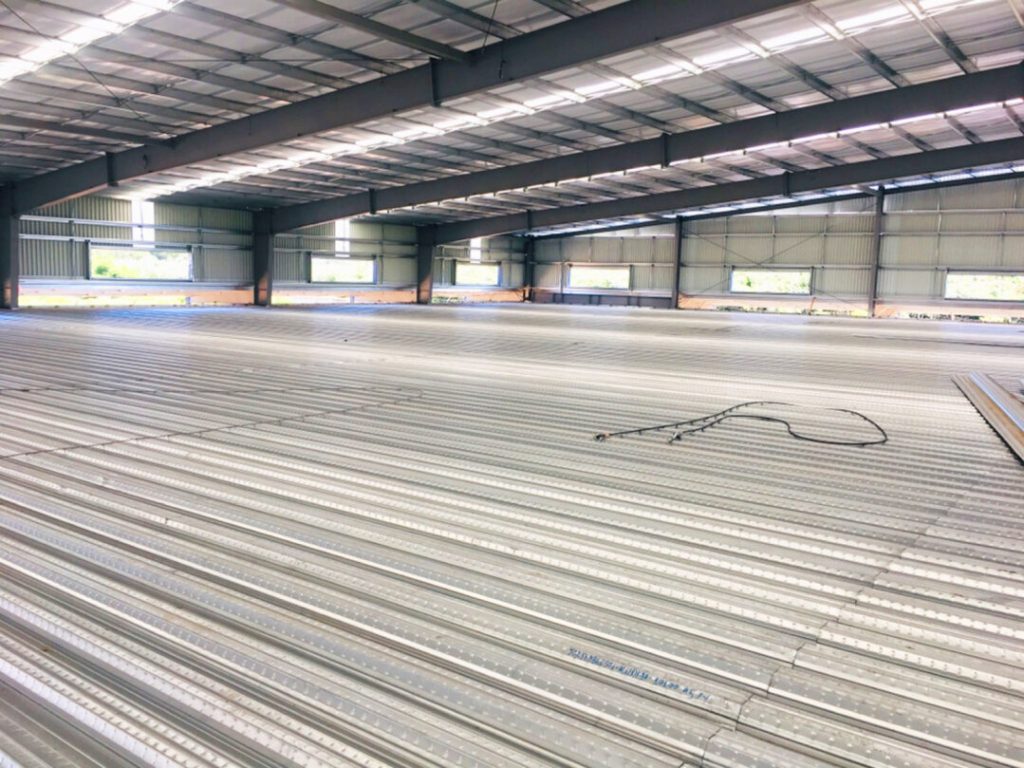
4. One-layer or double-layer steel floor arrangement?
Most often, depending on the construction load and the building site conditions, investors will choose between a one-layer or double-layer steel floor structure. For instance, when constructing an uncomplicated four-level house, opting for a single-layer steel floor structure remains a feasible choice.
However, for larger-scale projects with higher loads, arranging double-layer steel floors becomes crucial. A double-layer steel floor offers numerous advantages such as the ability to withstand greater loads with high reliability, lightweight design, and the capacity to span large distances. The steel floor structure also exhibits high flexibility during transportation and installation, making it a suitable choice for projects with high industrialization and requirements for rapid construction time.
5. Conclusion
Above are the details about double-layer steel floor structures, including the construction, arrangement method, and suggestions on whether to choose a one-layer or double-layer structure. Please contact Pebsteel by phone at +84 908 883531 or by email immediately at Marketing@pebsteel.com.vn if customers require comprehensive solutions for pre-engineered steel buildings and steel structures.
*** This article is intended to provide general information about the pre-engineered steel building and steel structure industry only. For further details or clarification based on your needs, please contact Pebsteel directly.






